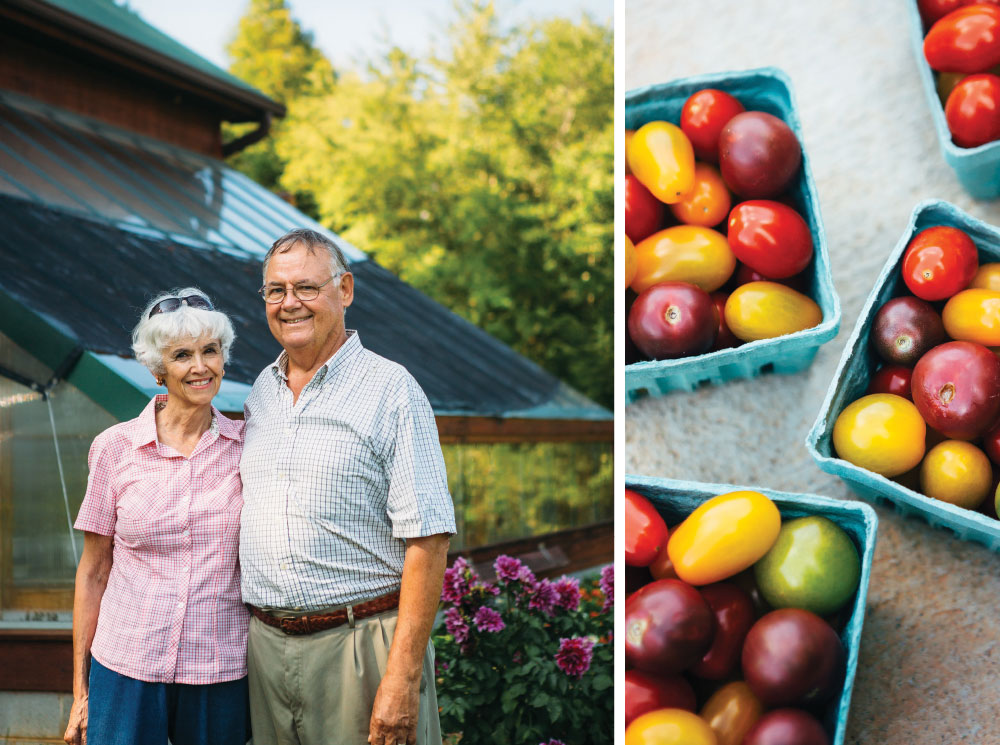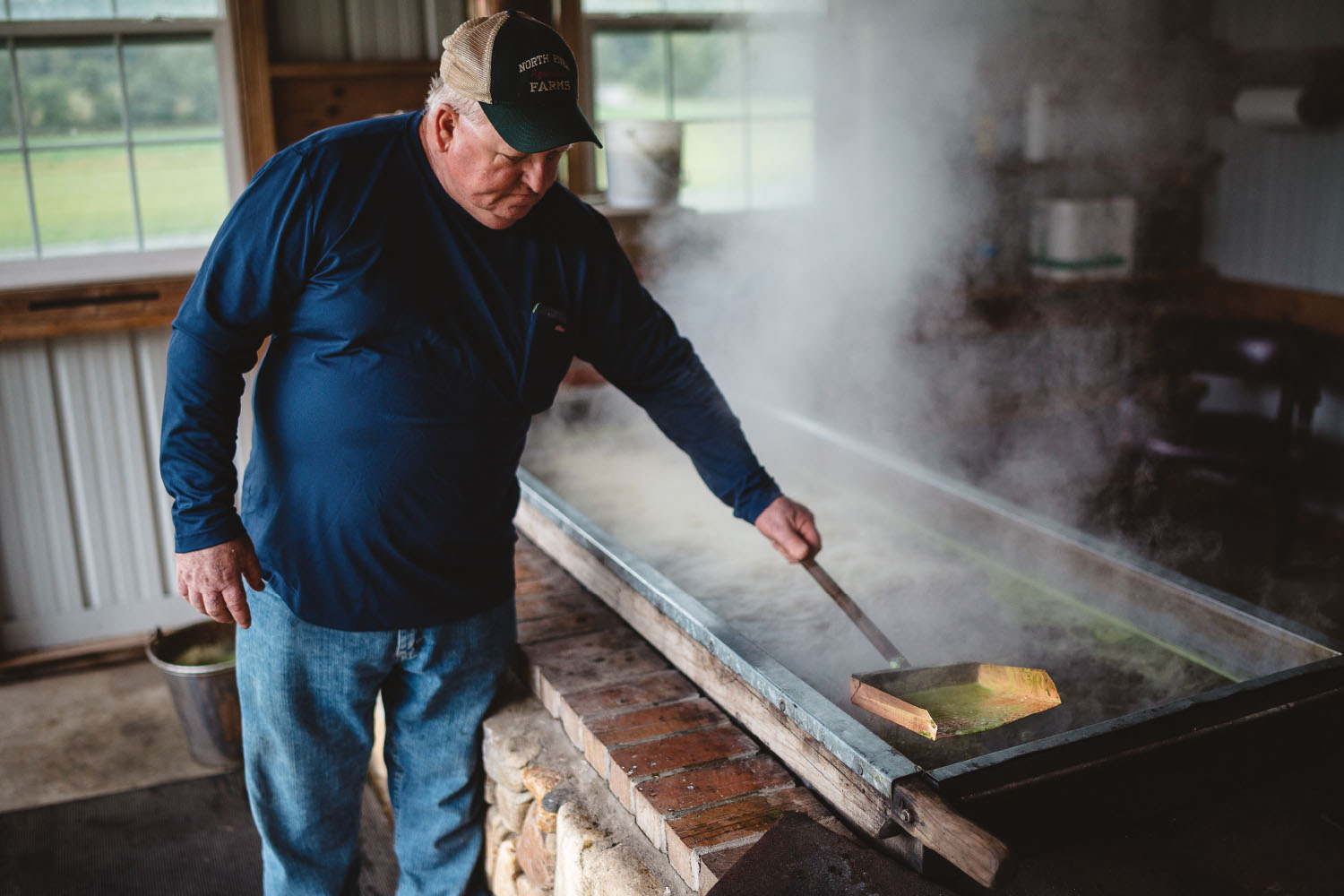“It takes a lot of work to grow tomatoes,” Dr. Paul Shoemaker says as he examines his tall, staked rows on a quarter-acre plot at his farm in Mills River. It’s mid-afternoon on a Saturday, and he’s been working outside since dawn.
“The most limiting factor,” says Shoemaker, “is disease.”
N.C. State University brought Shoemaker, a vegetable pathologist who earned his doctorate at Cornell University, to the Mountain Horticultural Crops Research and Extension Center in Mills River specifically to help mountain farmers grow tomatoes and research hundreds of vegetable diseases. When he started in 1970, there were 1,000 small family farmers, and he watched as the industry shifted to a few dozen farming outfits.
In his 32 years with N.C. State, Shoemaker succeeded in fighting tomato diseases such as bacterial canker — a seed-borne ailment for which he developed a treatment that “pretty much solved the problem,” he notes quietly — and verticillium wilt, a soil-born disease, as well as early blight and late blight. He also taught graduate plant pathology classes for the extension agents.
After Shoemaker retired, there were budget challenges at N.C. State and the university opted not to re-hire for his position. “The tomato growers rose up in arms, and they went to the chancellor and they re-established the position,” Shoemaker reveals.
He retired in 2002 and ever since has been farming his own crop of vegetables and Christmas trees with his wife, Simone.
But at 74, Shoemaker isn’t slowing down. This year he increased his tomato production by 50 percent to 1,200 plants, to accommodate the seven Henderson County restaurants he delivers to, ranging from the Flat Rock Village Bakery to West First and the Kenmure County Club to Champion Hills. That’s more than four tons of tomatoes, the amount he sold in 2011 when he grew only 800 plants.
Shoemaker currently grows 50 varieties, ranging in color from the yellow Mr. Stripey with red streaks to the dark-fleshed Cherokee Purple. Thirty of those 50 are named varieties and the other 20 are breeding lines Shoemaker’s friend and fellow researcher Dr. Randy Gardner is developing.
Tomato Roots Run Deep
Shoemaker grew up on a tomato-growing farm in southern New Jersey, near canneries for Campbell’s and Heinz. As an infant, he was placed on a blanket by the tomato fields while his mother and father harvested, and as a teenager he used to pick a hundred baskets of tomatoes a day with his brother for 25 cents per half-bushel basket.
His Holly Spring Farm started as the local-food movement was gaining steam. Beyond offering fresh, healthy produce, Shoemaker sees his farm as an opportunity to continue hiring high school and college students to help him harvest his crops, just as he had hired them to work on his research plots through N.C. State.
“It’s good training for young people to work on a farm and to see where their food comes from and how much work is involved,” Shoemaker says. His three young employees left for school in August. Retired friends fill in this month.
By comparison, Shoemaker says, the 40-50 larger tomato growers in Western North Carolina mostly use migrant labor. “But there has been a return [of interest from young residents]. If you go to some of the smaller counties, like Madison, there is a lot of interest in the type of thing I am doing.”
Going to Market
Every Thursday afternoon at the Flat Rock tailgate market and Saturday mornings at the Mills River farmers market from early May to late October, customers line up for Shoemaker’s produce, from asparagus to heirlooms, butternut squash to pumpkins.
It is late July and the height of tomato season. This Thursday in Flat Rock, Shoemaker sells out his supply of 50 pounds of heirlooms to his long-term customers.
“I’ve been coming here for years, and Paul’s stuff is the freshest, the cleanest, and the most tasty,” says Kate Thayer, who regularly buys $15 to $20 a week of Shoemaker’s vegetables. “I wouldn’t miss a week without coming here. Paul is very particular, very organized, and the food has a better taste.”
Saundra and Jose Poces also stop by the stand to visit and shop. “Paul knows all about the diseases that attack tomatoes, so he’s really up on how to produce really good tomatoes. The grocery-store tomatoes are kind of wimpy compared to what he has,” says Saundra, a former organizer of the tailgate market.
“He is the tomato man,” she concludes.
Advice for Tomato Growers
One of Shoemaker’s secrets is letting tomatoes ripen on the vine. “In the wintertime, the tomatoes are coming from such long distances that if [growers] picked it ripe, it would never make it to market,” he explains. “So they’re picked green and the sugars and the acidity and flavor don’t have a chance to develop. I try to pick ripe, where those factors are maximized.”
He suggests only small-fruited tomato plants for container gardening because it’s very difficult to regulate water in a pot. Tomatoes need full sunlight and a sweet soil. The soils in this area are naturally acidic — but that’s easily corrected with lime, Shoemaker says.
He sprays as little as possible but does use a fungicide to keep notorious late blight off. He also recommends the particularly disease-resistant “Mountain Magic” hybrids, and is a firm believer in crop rotation. “There are soil-born diseases you avoid by planting in a different place each year.”
“A True Heirloom”
The soft-spoken farmer and his wife work six days a week in the growing season and travel in winter. Shoemaker talks about a sabbatical in France where he encountered an unusually large “coeur de boeuf” tomato shaped like a beef heart. “It’s aptly named. When you cut through it, it’s solid meat and slowly ripening. That one is a true heirloom,” Shoemaker recalls, noting he saved the seed and is able to keep it going.
But if you ask Shoemaker his favorite kind of tomato, he’ll simply tell you, “the one I am eating.”



